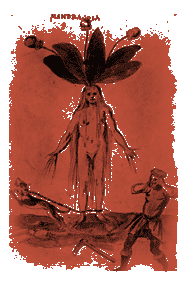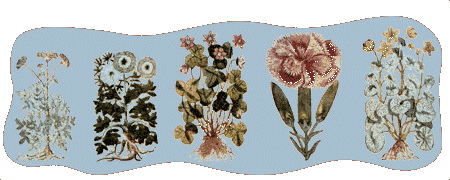
|
From the Material to the Mystical Herbal
Treatments •
Dietary Solutions
The Mandrake Root From primitive times the mandrake root was deemed a mystic plant by Eastern races and, among its other virtues, was regarded by them as possessing the power to remove sterility as well as the ability to stimulate the passion of love. It was certainly looked upon by the ancients as something more than a mere plant, and appears to have been generally regarded as the abode or embodiment of a demon or evil spirit. A dog was traditionally used to pull it up, because the screams of the plant as it was uprooted were reputed to cause madness. Mandrake roots have been used for fertility problems for thousands of years. A classic case is found in the Bible, in the story of Rachel and Leah. Rachel tried for years to conceive, and felt great despair when she continued to be unsuccessful. She moaned to her husband, "Give me children, or else I die!" She finally ate mandrakes, and ended up conceiving (Genesis 30).
Mandrakes are still imported from the Orient and are in demand in America among orthodox Jews. They are rarely sold for less than four dollars per specimen. They are still thought to be male and female, and are used remedially, a bit being scraped into water and taken internally. The Greeks ascribed to the mandrake root the power of exciting the passion of love, and when steeped in wine or vinegar believed it would promote conception. |
|
|
The following herbs can be purchased separately or in combinations specifically targeted to nourish male or female reproductive systems. For Women Dong Quai This herb, often called the Queen of the Female Herbs, has been used for thousands of years by women in China to nourish and balance the reproductive system. It comes from the root of the angelica sinensis plant, grown in certain Chinese provinces. The name means "compelled to return," signifying a woman returning to her normal female functions. Some say the name connotes a woman’s reverting to her husband, with implied fertility virtues. Chinese women use dong quai for menstrual period regulation. Many claim it nourishes the blood and promotes the growth of the womb. Research has shown that it helps in menopause and soothes cramps. It is used by European medical doctors to treat painful menstruation, excessive bleeding, and suppressed menstruation. Many herbalists claim it dissolves blood clots and opens blocked passageways in the body.
|
The Wonderful World of Herbs Even before the days of Lydia Pinkham’s herbal female tonic formula in the late 1800s, which claimed to have "a baby in every bottle," women used herbs for their unique needs. This herbal tradition is thousands of years old, and only for the past several decades has it been overshadowed by the modern medical revolution–at least in America. |
|
Modern science has verified that dong quai is rich in vitamin F, cobalt, and iron. It is believed to be nourishing to female glands for that and for other reasons. For overall balance and the health of the reproductive system, dong quai is an excellent herb to use. The Chinese say it takes three months of regular use to notice the herb’s benefits.
Ho Shou Wu According to Chinese folk medicine, ho shou wu enhances fertility. Scientists have put that claim to the test. From a scientific study reported by the U.S. Herbal Delegation: "In animals, extracts of this plant show antitumor activity, as well as progestational activity, sedative effects, and antipyretic effects." In other words, in animals ho shou wu extract demonstrated beneficial effects on fertility and on other female functions involving ovulation and corpus luteum formation. False Unicorn False unicorn grows in moist regions in the eastern third of the United States. Herbalists use it as a uterine tonic, diuretic, and menstrual pain tonic. Historically, many herbalists have recommended it for ovarian pain and dysfunctions of the ovaries. The root part of the plant is used. Of all the herbs, false unicorn has one of the strongest reputations for promoting fertility. Although this has not been scientifically verified (no studies of this nature have been conducted), there is a great deal of anecdotal evidence in its favor. Dr. Christopher, a famous herbalist, recommended false unicorn along with other herbs and nutrients for couples having difficulty conceiving. He reported great success. Damiana Damiana is a highly aromatic shrub which grows in the desert regions of the southwest United States and Mexico. Women in Mexico use it for female problems. Some herbalists recommend it for increasing fertility in both sexes and for increasing sexual desire, although this is a traditional use and has not been scientifically verified. It is a common ingredient in both male and female tonic formulas. You’ll recognize the word "aphrodisiac" in its Latin name, turnera aphrodisiaca. Yams A professor at the University of Ibadan in Nigeria conducted studies on the native Yoruba tribe, who have one of the highest rate of twin births in the world. The professor found that their diet contained large amounts of yams (sweet potatoes). Yams have long been reputed to help in infertility, but science is only recently finding evidence to back this long-held belief. Yams contain steroid-like compounds that can be easily converted into sex hormones. They are sometimes used as the raw material for making contraceptives. The compounds trigger the release of ESH, which stimulates the ovaries to release an egg. In this case high yam consumption seems to stimulate the release of more than one egg each month. Women in the Yoruba tribe have high levels of FSH. This news was reported in Alternatives, July 1989. The author added that researchers feel that one-half cup of sweet potatoes daily might increase one’s chance of having twins. For the infertile couple, it may increase your chance of having one child!
For Men Siberian Ginseng Many forms of ginseng grow around the world–American ginseng, Panax ginseng, Korean ginseng, and Siberian ginseng. Ginseng has become one of the most studied herbs of all time. Researchers in the former Soviet Union have done the most research on Siberian ginseng, a close relative of Panax ginseng. Many of Siberian ginseng’s healthful properties have been scientifically verified. It is widely used by people around the world as a general tonic, and is almost always a main ingredient in male tonics. Many believe that it has aphrodisiac properties, enhancing and increasing male sexual function. It can also be used by women to aid in balancing the glandular system and helping to promote a general state of good health. Studies done in the animal husbandry industry have shown that Siberian ginseng has pronounced effects on the reproductive system. "In comparison with controls, more milk was made by cows, more honey by bees, and minks produced more living young." In the minks’ case, according to a 1988 article in Nutrition News, "the number of sterile females was lowered and stillborn births were reduced by 50 percent." Bulls given Siberian ginseng also showed increased virility. According to the Nutrition News article, experiments in China showed that ginseng affects the production of LH, the luteinizing hormone, which influences the menstrual cycle and stimulates testosterone production in men. Saw Palmetto Native to the coastal areas of Florida and Texas, the saw palmetto plant has a long history of use as food by the native Indians of the region. The part of the plant most often used in herbology is the berries. Clinical trials conducted with saw palmetto showed that the fruit helps reduce symptoms of BPH, a condition in which the prostate enlarges and causes restriction of the urinary tract. The FDA would not allow any claims to be made for the fruit because BPH is not a self-limiting condition and consumers might diagnose and prescribe their own treatment. The bottom line: saw palmetto berries were shown to have a positive effect on prostate function, but the FDA will not allow health food businesses to make such claims. Saw palmetto has also been shown to have estrogenic compounds. Traditionally, the herb has been used as a male tonic, aphrodisiac, and general glandular nourisher.
Bee Pollen Although bee pollen is not an herb, it does come from flowers. Pollen is produced by the male part of flowering plants. Bees carry the pollen from flower to flower, an action that cross-pollinates and fertilizes seeds. The bees carry some of the pollen on their back legs to the hive, where they use it for food. The Hunzas, who live in the Himalayan Mountains, and the Caucasus people of Russia, both renowned for their health and longevity, eat above-average quantities of bee pollen and raw honey. Many athletes and other health-conscious individuals consume bee pollen as an energy-promoting food supplement. Even Ronald Reagan, former United States president, reportedly uses bee pollen to increase his overall health and stamina. Bee pollen is considered a complete food. It contains all the vitamins and minerals necessary for survival. It also contains the 10 essential amino acids necessary to make a complete protein, as well as enzymes and coenzymes. Among the many health benefits of pollen are claims that it balances glandular activity and increases fertility in some cases. According to one report, 40 men in infertile marriages where sperm deficiency was the cause of infertility took supplementary bee pollen. It proved to solve the problem. After taking bee pollen the men reported improved health in general, an increase in sexual activity, and improved sperm production. In a study conducted by Bogdan Tekavcic, M.D., chief of a gynecological center in Yugoslavia, bee pollen corrected some menstrual problems. Half of a group of women with menstrual complaints were given bee pollen with royal jelly, and the other half were given a placebo. Almost all the women on the royal jelly-pollen regimen showed improvement or disappearance of their menstrual problems, whereas the placebo group showed little change. If you have plant or pollen allergies, you might be allergic to bee pollen. On the other hand, bee pollen helps some people overcome allergies. Ask a health professional for advice. |
|

